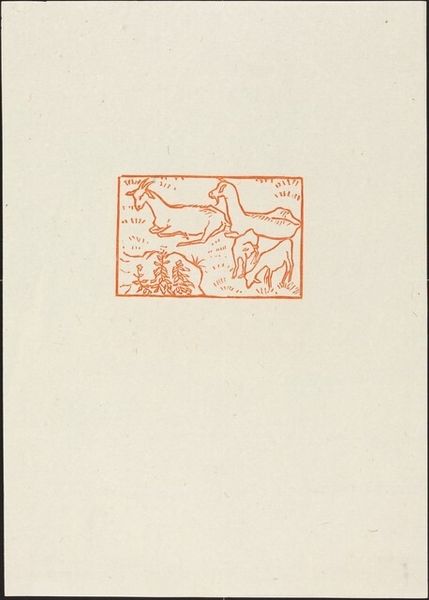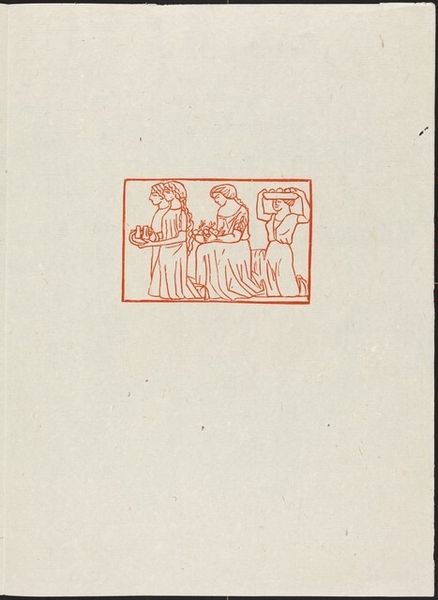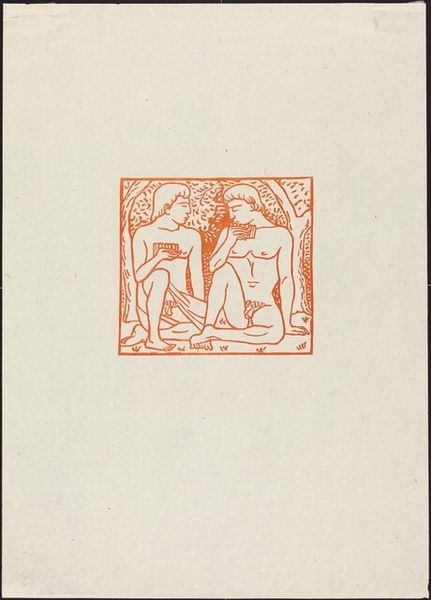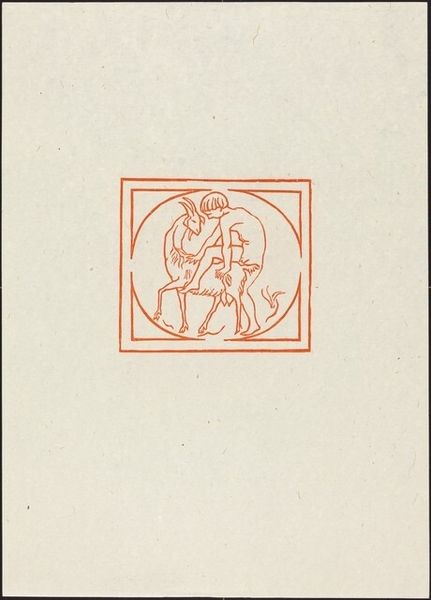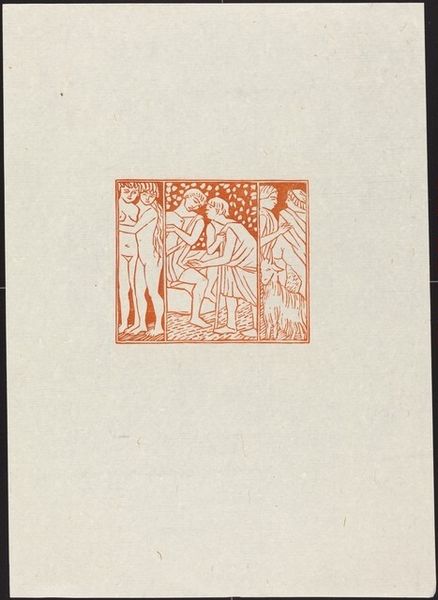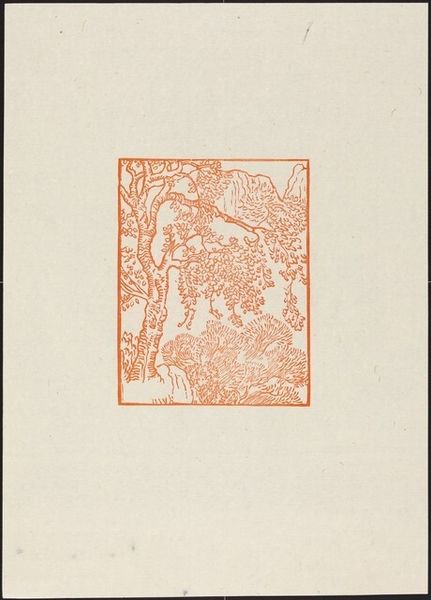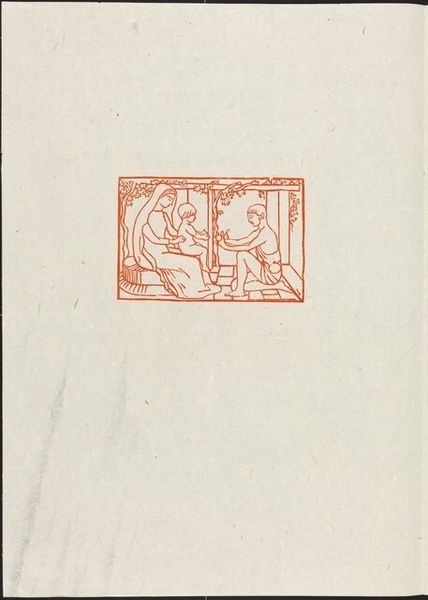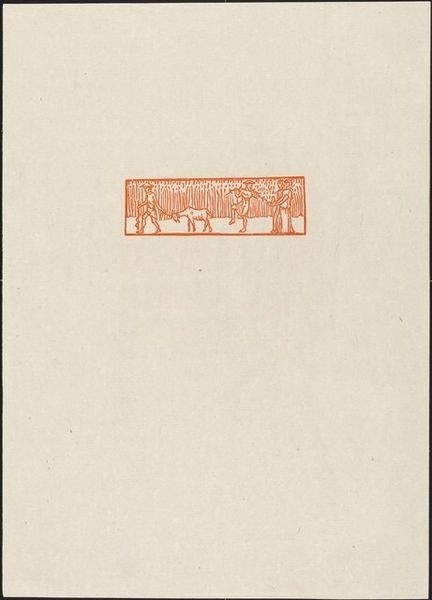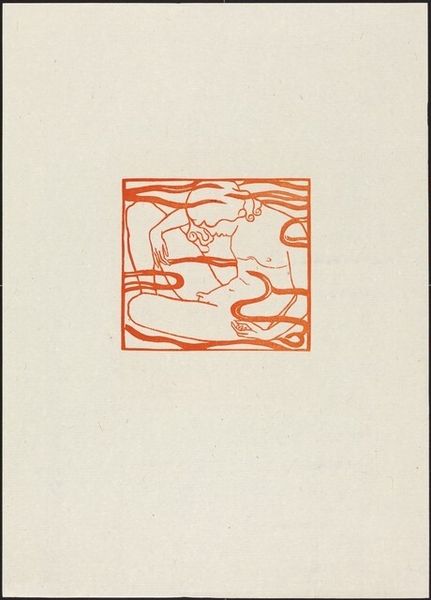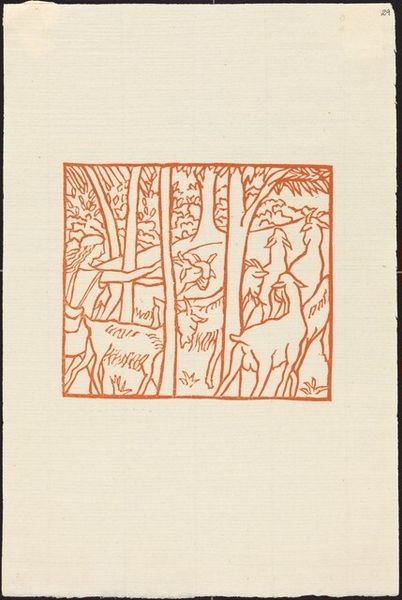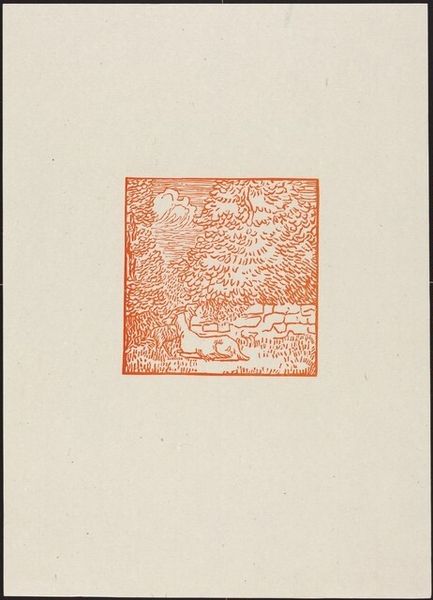
Tenth Eclogue: Pan of Arcady, Silvanus and Apollo (Pan, Sylvanus et Apollon) Possibly 1926
0:00
0:00
print, ink
#
ink paper printed
# print
#
greek-and-roman-art
#
landscape
#
figuration
#
ink
#
linocut print
#
history-painting
Copyright: National Gallery of Art: CC0 1.0
Curator: Aristide Maillol, best known for his sculptures, created this print titled "Tenth Eclogue: Pan of Arcady, Silvanus and Apollo" possibly around 1926, rendered in ink on paper, presenting us with a scene steeped in classical mythology. Editor: Well, it feels like a lost fragment from an ancient urn. There’s this understated quality about it – the earthy red ink on what looks like aged paper evokes a real sense of antiquity, doesn’t it? Almost as if we're peeking at a ritualistic procession. Curator: Indeed. The figures depicted reference Virgil’s pastoral poetry. Pan, the goat-legged god, and Silvanus, the deity of the woods, stand alongside Apollo. It's an imagined Arcadia, a realm romanticized as an idyllic retreat. It offers an insight into the continuing impact of classical forms in the 20th century. Maillol returns repeatedly to this pastoral theme. Editor: It's a reminder of humanity’s deep-rooted connection to nature and myth. It really gets you wondering what kind of stories were circulating that these gods represented, eh? Pan feels particularly vivid with his pipes, evoking lively celebrations amidst tranquil groves! I feel that music looking at this image! Curator: That depiction aligns with a longer trajectory of engagement with the Arcadian motif that occurs from ancient Greece to contemporary times. Maillol offers a twentieth-century iteration of the same thematic and figural dynamics present in Renaissance and Baroque artistic production. It invites us to ponder not just the individual creation, but its broader place within cultural and visual history. Editor: Looking at the placement within this printed space, there is all of this negative space. Almost makes this mini world feel… preciously preserved somehow. I mean what happens if the text around the figures went off the edges of the page or canvas. A whole different energy right! Curator: A fitting reflection to end on, acknowledging that the cultural reception and contextualization shapes the experience we can have encountering these figures. Editor: Right you are. I am eager to know how Maillol was understanding the stories and imagery present here and putting it through his filter. It sparks a desire to better understand his artistic intentions.
Comments
No comments
Be the first to comment and join the conversation on the ultimate creative platform.
